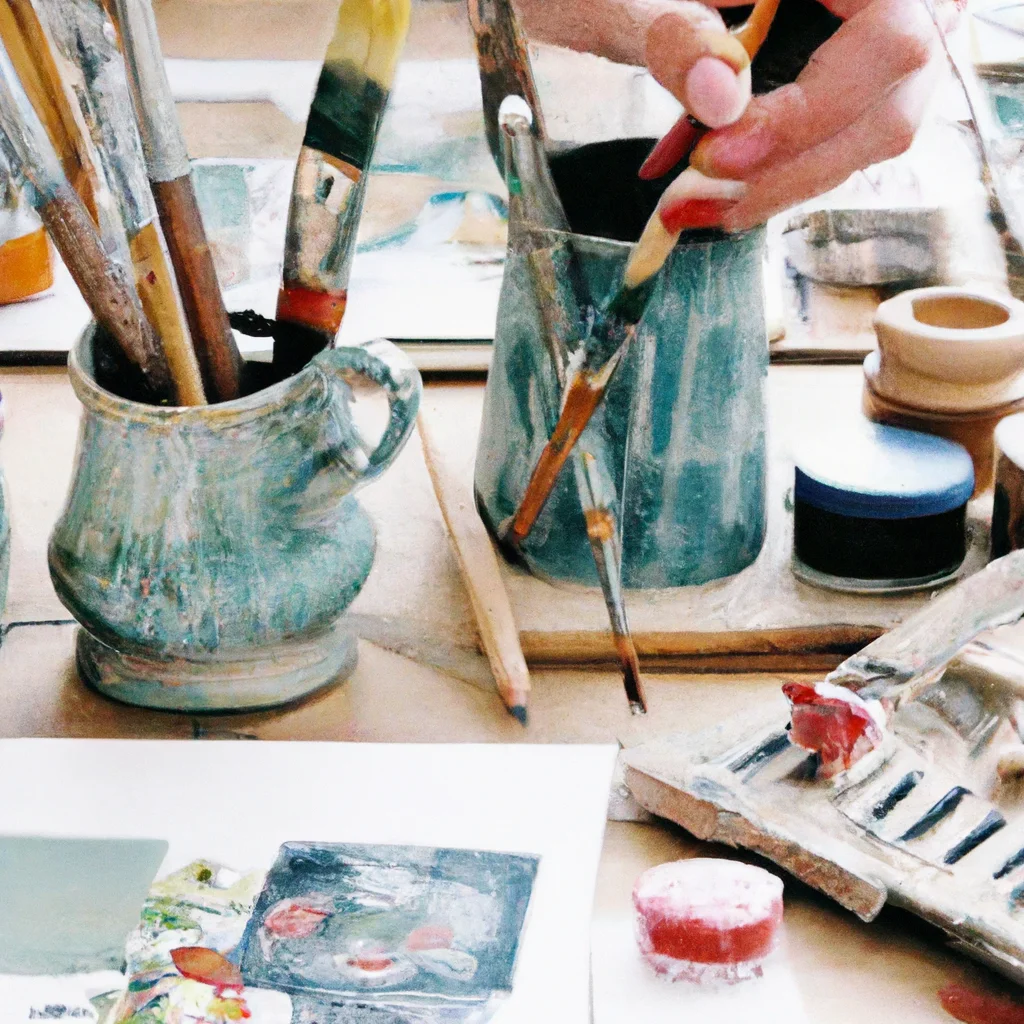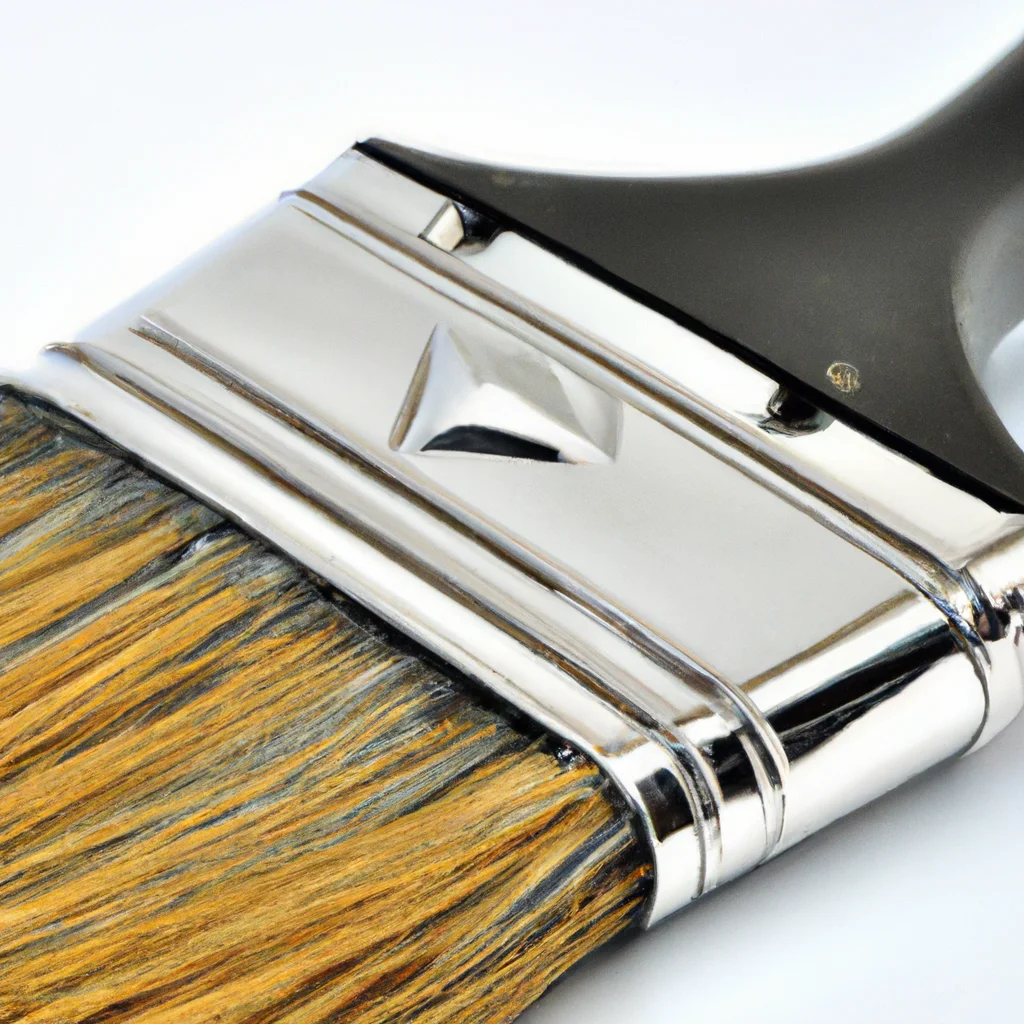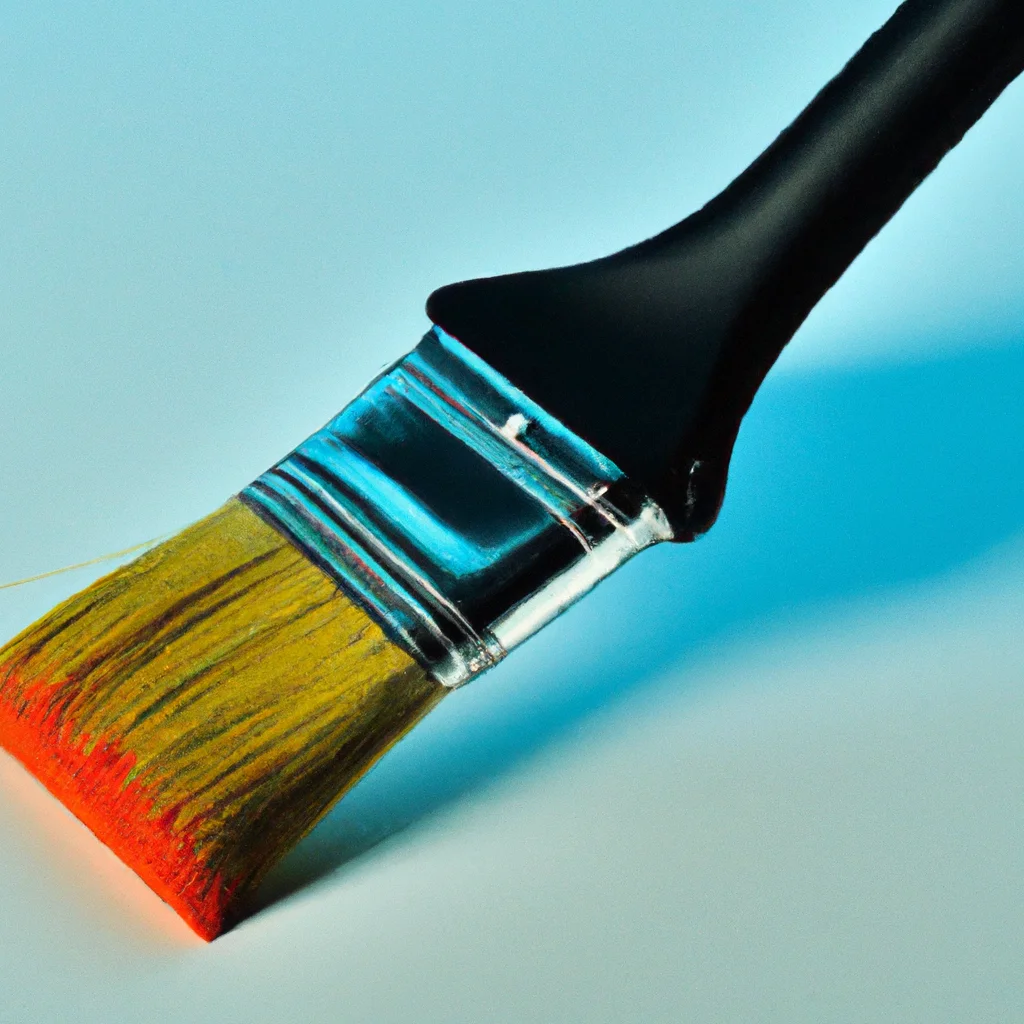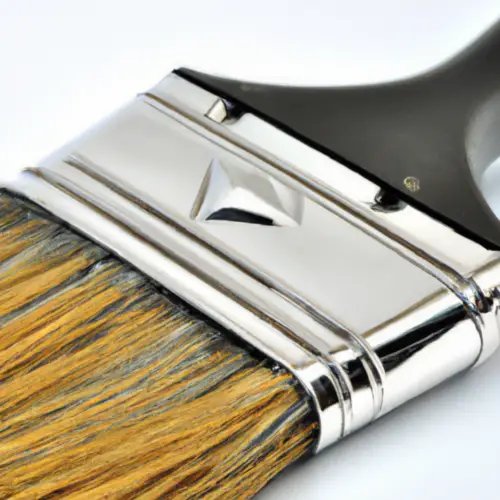Looking to achieve a flawless paint job? Look no further! We’ve carefully researched and reviewed the top 5 paintbrushes available for purchase, to ensure that you have the perfect tool for any painting project. From foam brushes to deck stain applicators, our recommendations cover a variety of brush types to suit your needs.
In this article, we’ll dive into the different types of paint brushes, factors to consider when choosing the best one, top paint brush brands, and even provide some tips for using brushes effectively. So, whether you’re a professional painter or a DIY enthusiast, read on to discover the best paint brushes that will help you achieve your desired results.

Table of Contents
Introduction to the Best Paint Brushes
Paint brushes are essential tools for any painting project, whether it’s giving a room a fresh coat of paint or creating a masterpiece on canvas. Using the right paint brush is key to achieving a desired paint job, as it enables smooth and precise application. In this article, we will explore the different types of paint brushes, factors to consider when choosing the best brush, top paint brush brands, and tips for using paint brushes effectively.
Types of Paint Brushes
There are various types of paint brushes available, each designed for specific purposes and painting techniques. Understanding the different types can help you choose the appropriate brush for your project.
Natural bristle brushes
Natural bristle brushes are made from animal hair, usually hog hair. These brushes are ideal for oil-based paints, varnishes, and shellacs. They hold a large amount of paint and provide excellent coverage, making them suitable for large areas. However, they are not recommended for water-based paints, as the bristles may become limp and lose their shape.
Synthetic bristle brushes
Synthetic bristle brushes are made from nylon, polyester, or a blend of both. These brushes are more versatile and can be used with both water-based and oil-based paints. They are durable, easy to clean, and maintain their shape well. Synthetic bristle brushes are a popular choice for general painting tasks.
Foam brushes
Foam brushes have a foam pad instead of bristles. They are best suited for smooth surfaces and are commonly used for applying varnishes, stains, and clear coats. Foam brushes are disposable and can provide a smooth and even finish.
Angled brushes
Angled brushes, also known as cutting brushes, have bristles that are cut at an angle. This design allows for more precise cutting-in and trim work, making them suitable for painting edges, corners, and tight spaces. Angled brushes are available in both natural and synthetic bristles.
Fan brushes
Fan brushes have bristles spread out in a fan shape. They are primarily used in artistic applications, such as creating texture, blending colors, and adding special effects. Fan brushes are commonly used in oil and acrylic painting techniques.


Factors to Consider When Choosing the Best Paint Brush
Choosing the best paint brush for your project involves considering several factors. By understanding these factors, you can select a brush that is well-suited to your needs and provides optimal results.
Type of paint
Consider the type of paint you will be using. Different paints require different brushes for optimal application. For example, natural bristle brushes are best for oil-based paints, while synthetic brushes work well with both oil-based and water-based paints. Foam brushes are ideal for applying stains and varnishes.
Painting technique
Your chosen painting technique will also dictate the type of brush you need. For larger areas, a brush with a large surface area and long bristles may be more efficient. For detailed work or cutting-in, a smaller brush with shorter bristles, such as an angled brush, may be more suitable.
Bristle material
The bristle material affects the performance of the brush. Natural bristle brushes are better suited for oil-based paints, while synthetic bristle brushes can handle both oil-based and water-based paints. Consider the desired finish and the type of paint you will be using when selecting the bristle material.
Brush size and shape
The size and shape of the brush are important factors to consider. A larger brush is more efficient for covering large areas, while a smaller brush allows for more precise work. The shape of the brush, such as angled or fan brushes, can also impact the control and accuracy of your painting.
Grip and handle design
Comfort is crucial when using a paint brush for an extended period. Consider the grip and handle design of the brush. Look for brushes with ergonomic handles that provide a comfortable grip and reduce hand fatigue. A well-designed handle can enhance your painting experience and improve your overall control of the brush.
Price
Paint brushes come in a wide range of prices, so it’s important to consider your budget when choosing a brush. While it can be tempting to opt for a cheaper brush, investing in a high-quality brush can make a noticeable difference in the outcome of your painting project. Consider the durability and performance of the brush when evaluating its price.
Top Paint Brush Brands
When it comes to paint brushes, there are several reputable brands known for their quality and performance. These brands have established themselves as leaders in the industry, providing brushes that deliver outstanding results. Here are some of the top paint brush brands to consider:
Purdy
Purdy is a well-known and respected brand in the painting industry. They produce a wide range of paint brushes known for their excellent craftsmanship and durability. Purdy brushes are favored by professional painters and DIY enthusiasts alike.
Wooster
Wooster is another highly regarded brand that offers a variety of paint brushes designed for different applications. They focus on creating innovative and high-quality brushes to help achieve professional results.
Wooster Shortcut
Wooster Shortcut brushes are known for their shorter handle design, which provides exceptional control and maneuverability. These brushes are perfect for tight spaces and detailed work.
Richard
Richard is a Canadian brand known for its high-quality paint brushes. They offer a diverse range of brushes that cater to different painting needs. Richard Brushes are known for their durability and craftsmanship.
Benicci
Benicci specializes in producing professional artist brushes. While they may be primarily designed for artistic applications, many of their brushes can also be used for general painting tasks. Benicci brushes are known for their precision and performance.


Best Paint Brush Models by Type
To help you select the best paint brush for your specific needs, we have compiled a list of highly recommended paint brush models. These brushes have received positive reviews for their performance and quality.
Bates Foam Paintbrushes
The Bates Foam Paintbrushes are ideal for applying stains, varnishes, and glues. They are made with high-density foam that provides a smooth and even application. The brushes are disposable, making cleanup quick and easy.
perdura Deck Stain Brush Applicator
The perdura Deck Stain Brush Applicator is specifically designed for staining and sealing decks. It features a large brush head with thick bristles that hold a significant amount of stain, allowing for quick and efficient coverage. The brush also has a comfortable grip handle for ease of use.
Purdy Sprig Paintbrush
The Purdy Sprig Paintbrush is a high-quality brush suitable for both interior and exterior painting projects. It features natural bristles that hold and release paint evenly, providing a smooth finish. The brush has a comfortable wooden handle for extended use.
Benicci Professional Artist Paintbrush Set
The Benicci Professional Artist Paintbrush Set is a comprehensive set that caters to various painting techniques. The set includes brushes of different shapes and sizes, allowing for versatile applications. The brushes are made with high-quality materials and provide excellent control.
Richard Goose-Neck Angular Paintbrush
The Richard Goose-Neck Angular Paintbrush is designed for precision cutting-in and trim work. Its angled shape allows for easy access to corners and tight spaces. The brush is made with premium materials and delivers exceptional performance.
Wooster 5224 Sash Paint Brush
The Wooster 5224 Sash Paint Brush is a high-quality brush suitable for both interior and exterior painting. It features a blend of synthetic bristles that provide smooth and precise application. The brush has a comfortable grip handle for extended use.
Wooster Shortcut Angle Sash Paintbrush
The Wooster Shortcut Angle Sash Paintbrush is a versatile brush with a short handle that provides excellent control. It features a blend of synthetic bristles that deliver smooth and even coverage. The brush is suitable for both interior and exterior painting projects.
How to Choose the Right Paint Brush for Your Project
Choosing the right paint brush for your project is crucial for achieving the best results. Here are some steps to help you select the perfect brush:
Consider the surface
Take into account the surface you will be painting. Different surfaces may require different brush types and sizes. Smooth surfaces may benefit from foam brushes, while textured surfaces may require brushes with stiffer bristles for better coverage.
Determine the paint type
Consider the type of paint you will be using. If you plan to use oil-based paint, a natural bristle brush is recommended. Water-based paints can be applied with synthetic bristle brushes. Ensure that the brush is compatible with the type of paint to prevent any issues during application.
Choose the appropriate brush size and shape
The size and shape of the brush should align with the scale of your project. For larger areas, a wider brush will cover more surface area, saving you time and effort. For detail work or cutting-in, a smaller brush with a precise shape, such as an angled brush, will provide better control and accuracy.
Evaluate the grip and handle design
Comfort and ergonomics play a significant role in your painting experience. Look for brushes with comfortable grip handles that minimize hand fatigue. Consider the weight and balance of the brush to ensure optimal control during application.
Match the bristle material to the paint and technique
Choose the bristle material that suits your paint and painting technique. Natural bristle brushes are ideal for oil-based paints, while synthetic brushes can handle both oil-based and water-based paints. Additionally, consider how the bristles are constructed, as certain techniques may require specific bristle shapes, such as fan brushes for blending and texture.

Tips for Using Paint Brushes
Using paint brushes effectively can greatly enhance your painting experience and the quality of your work. Here are some tips to keep in mind:
Prepare the brush properly
Before using a new brush, remove any loose bristles by gently tapping it against a hard surface. This will help prevent stray bristles from getting stuck in the paint. Additionally, if you are switching between different paints or colors, thoroughly clean the brush to prevent cross-contamination.
Load the brush correctly
Dip the brush no more than one-third of the bristle length into the paint. This will ensure that the paint is distributed evenly throughout the bristles. Avoid overloading the brush, as it can result in drips and an uneven application.
Use the appropriate technique
Different painting techniques require different brush strokes. For smooth finishes, use smooth and consistent strokes in the direction of the surface. For textured finishes or artistic applications, experiment with various brush strokes and techniques to achieve the desired effect. Practice and patience are key to mastering different techniques.
Clean the brush thoroughly
After each use, clean the brush thoroughly to remove any residual paint. Rinse the brush in warm water or use an appropriate cleaning solution depending on the type of paint used. Gently reshape the bristles and store the brush in a clean, dry place to maintain its longevity.
Reviews and Comparisons
Now that we have explored the different types of paint brushes, factors to consider when choosing a brush, and provided tips for using brushes effectively, let’s review and compare the top 5 recommended paintbrushes.
Overview of the top 5 recommended paintbrushes
- Bates Foam Paintbrushes: These foam brushes are disposable and perfect for applying stains, varnishes, and glues. They provide a smooth and even application.
- perdura Deck Stain Brush Applicator: This brush is specifically designed for staining and sealing decks. Its large brush head and thick bristles allow for quick and efficient coverage.
- Purdy Sprig Paintbrush: This high-quality brush is suitable for both interior and exterior painting projects. It delivers even paint distribution and a smooth finish.
- Benicci Professional Artist Paintbrush Set: This comprehensive set offers brushes of different shapes and sizes, catering to various painting techniques. The brushes are made with high-quality materials for excellent performance.
- Richard Goose-Neck Angular Paintbrush: This brush is designed for precision cutting-in and trim work. Its angled shape provides easy access to corners and tight spaces, delivering exceptional performance.
Comparison of the features and performance
When comparing the features and performance of these paintbrushes, we found that each excelled in its respective category. The Bates Foam Paintbrushes are highly efficient for applying stains and varnishes, while the perdura Deck Stain Brush Applicator is specifically designed for deck staining.
The Purdy Sprig Paintbrush offers a smooth and even finish for both interior and exterior painting projects. The Benicci Professional Artist Paintbrush Set provides versatility with different brush shapes and sizes, while the Richard Goose-Neck Angular Paintbrush offers precision and control for detail work.
Pros and cons of each paintbrush
Bates Foam Paintbrushes:
- Pros: Disposable, smooth and even application, ideal for stains and varnishes.
- Cons: Limited use, not suitable for heavier paints.
perdura Deck Stain Brush Applicator:
- Pros: Specifically designed for deck staining, large brush head for quick coverage.
- Cons: Limited use for deck staining projects only.
Purdy Sprig Paintbrush:
- Pros: Suitable for both interior and exterior painting projects, smooth finish, even paint distribution.
- Cons: Higher price point compared to other brushes.
Benicci Professional Artist Paintbrush Set:
- Pros: Comprehensive set, versatility with different brush shapes and sizes, high-quality materials.
- Cons: Primarily designed for artistic applications, may be too specialized for general painting projects.
Richard Goose-Neck Angular Paintbrush:
- Pros: Designed for precision cutting-in and trim work, angled shape for easy access to corners and tight spaces.
- Cons: Limited use for detail work only.

Where to Buy the Best Paint Brush
The best paint brushes can be purchased from a variety of places, including:
Home improvement stores
Major home improvement stores like Home Depot and Lowe’s stock a wide range of paint brushes. These stores usually carry trusted brands and offer knowledgeable staff who can assist you in choosing the right brush for your project. You can physically examine the brushes and compare their features before making a purchase.
Local home centers
Local home centers, particularly those specializing in paint and hardware supplies, are another great option for purchasing paint brushes. These stores often have a wide selection of brushes from various brands, including both professional-grade and more affordable options.
Online retailers like Amazon
Online retailers like Amazon offer convenience and the ability to compare prices and read customer reviews. They provide a vast selection of paint brushes from different brands, allowing you to easily find the brush that suits your needs. Just be sure to read the product descriptions and reviews to ensure you are purchasing from reputable sellers.
Conclusion
Investing in high-quality paint brushes is crucial forachieving a desired paint job. The right brush can make a significant difference in the application process, providing smooth and precise results. Consider the type of paint, painting technique, bristle material, brush size and shape, grip and handle design, and your budget when choosing a paint brush.
The top 5 recommended paintbrushes include Bates Foam Paintbrushes, perdura Deck Stain Brush Applicator, Purdy Sprig Paintbrush, Benicci Professional Artist Paintbrush Set, and Richard Goose-Neck Angular Paintbrush. By following the tips for using paint brushes effectively, you can ensure a successful painting project.
Whether you purchase your paint brushes from home improvement stores, local home centers, or online retailers like Amazon, always prioritize quality and choose brushes from trusted brands. With the right paint brush and proper technique, you can achieve professional-level results that will leave your surfaces looking beautiful and well-painted.


